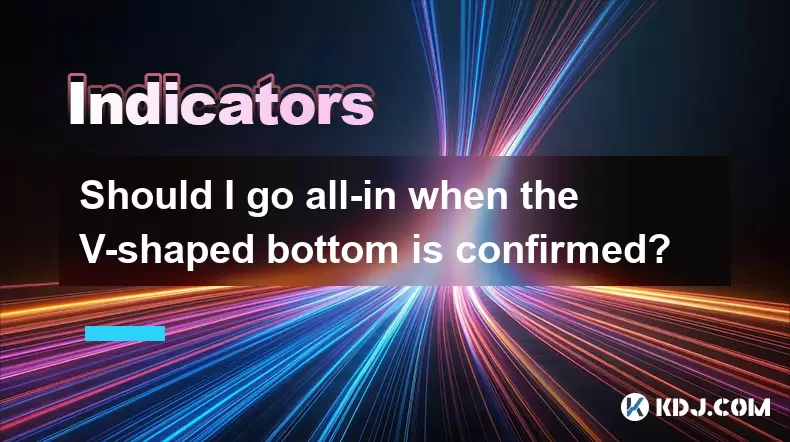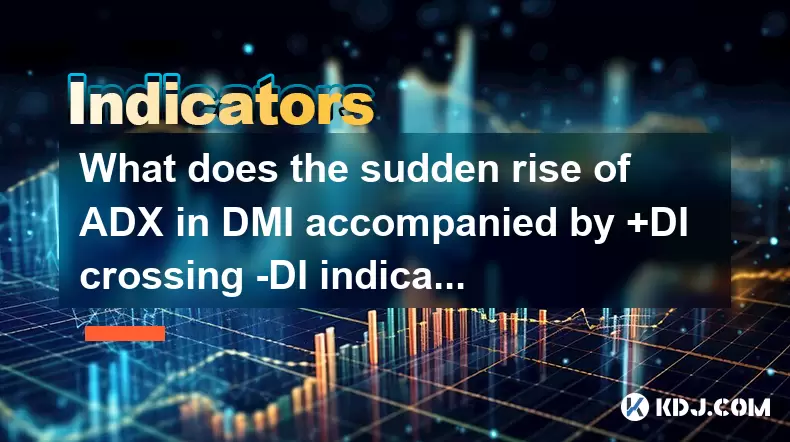-
 Bitcoin
Bitcoin $117400
1.93% -
 Ethereum
Ethereum $3747
3.63% -
 XRP
XRP $3.157
3.09% -
 Tether USDt
Tether USDt $1.000
0.02% -
 BNB
BNB $783.3
3.19% -
 Solana
Solana $186.6
5.64% -
 USDC
USDC $0.9999
0.01% -
 Dogecoin
Dogecoin $0.2375
5.42% -
 TRON
TRON $0.3185
1.32% -
 Cardano
Cardano $0.8191
3.28% -
 Hyperliquid
Hyperliquid $44.43
5.76% -
 Sui
Sui $3.995
9.84% -
 Stellar
Stellar $0.4396
6.27% -
 Chainlink
Chainlink $18.26
4.83% -
 Hedera
Hedera $0.2646
11.88% -
 Bitcoin Cash
Bitcoin Cash $553.5
5.55% -
 Avalanche
Avalanche $24.13
4.73% -
 Litecoin
Litecoin $113.3
1.77% -
 UNUS SED LEO
UNUS SED LEO $8.975
0.11% -
 Shiba Inu
Shiba Inu $0.00001405
5.69% -
 Toncoin
Toncoin $3.319
7.46% -
 Ethena USDe
Ethena USDe $1.001
0.02% -
 Uniswap
Uniswap $10.44
4.98% -
 Polkadot
Polkadot $4.098
4.31% -
 Monero
Monero $328.6
1.87% -
 Dai
Dai $1.000
0.01% -
 Bitget Token
Bitget Token $4.561
2.76% -
 Pepe
Pepe $0.00001261
5.29% -
 Aave
Aave $296.8
4.02% -
 Cronos
Cronos $0.1335
3.28%
Should I go all-in when the V-shaped bottom is confirmed?
A confirmed V-shaped bottom signals a strong reversal, but going all-in remains risky—use phased entries, stop-losses, and volume analysis to manage exposure.
Jul 25, 2025 at 05:56 pm

Understanding the V-Shaped Bottom in Cryptocurrency Markets
A V-shaped bottom is a technical chart pattern that indicates a sharp decline in price followed by a rapid recovery, forming a "V" shape. This pattern is significant in the cryptocurrency market due to its volatility and the speed at which reversals can occur. When a V-shaped bottom is confirmed, it typically means the price has hit a low point and has begun a strong upward movement, often on increasing volume. Confirmation usually occurs when the price breaks above a key resistance level or retraces a certain percentage—commonly 50% of the prior downtrend—and sustains the move.
Traders look for specific signals to confirm this pattern. These include a reversal candlestick such as a hammer or bullish engulfing pattern at the bottom, followed by consecutive green candles. Volume analysis plays a critical role; a genuine V-bottom is supported by rising trading volume during the ascent, indicating strong buyer interest. Without volume confirmation, the rebound may be a temporary bounce, not a sustainable reversal.
It’s essential to distinguish a true V-shaped bottom from a dead cat bounce, where prices briefly recover before resuming a downtrend. The key difference lies in momentum and follow-through. A confirmed V-bottom shows consistent upward momentum and often aligns with positive market sentiment or fundamental news, such as regulatory clarity or major exchange listings.
Why Going All-In Is Risky Despite Confirmation
Even if a V-shaped bottom appears confirmed, allocating your entire capital—going all-in—into a single cryptocurrency is an extremely high-risk strategy. Cryptocurrency markets are known for their extreme volatility, and past price action does not guarantee future performance. A confirmed bottom reduces the likelihood of further downside, but it does not eliminate risk.
One major danger is false breakouts. Price may break resistance and appear to confirm the V-bottom, only to reverse sharply due to profit-taking or negative news. For example, a coin might surge after a favorable tweet from a prominent figure, but if the broader market turns bearish, the rally could collapse. In such cases, being fully exposed amplifies losses.
Another consideration is portfolio concentration. Putting all funds into one asset eliminates diversification, which is a core principle of risk management. If that asset fails to sustain its recovery or faces unforeseen issues—such as a security breach or development delays—the entire investment is at risk. Using position sizing and risk allocation helps preserve capital during uncertain market phases.
How to Confirm a V-Shaped Bottom with Technical Indicators
To increase confidence in a confirmed V-bottom, traders should use a combination of technical tools. Here are key steps:
- Use the Fibonacci retracement tool to measure how much of the prior decline has been recovered. A move above the 61.8% retracement level with volume support strengthens the confirmation.
- Apply the Relative Strength Index (RSI) to check for divergence. A bullish divergence occurs when price makes a lower low, but RSI makes a higher low, signaling weakening selling pressure.
- Monitor moving averages, especially the 50-day and 200-day. A price crossing above these averages, particularly in tandem with volume, supports the reversal.
- Look for MACD (Moving Average Convergence Divergence) to shift from negative to positive territory, indicating increasing bullish momentum.
These tools should not be used in isolation. Combining them provides a confluence of signals, increasing the probability that the V-bottom is valid. For instance, if price breaks above 61.8% Fibonacci, RSI shows bullish divergence, and MACD turns positive—all on high volume—the setup is stronger.
Practical Steps for Position Entry After a V-Bottom
Instead of going all-in, consider a structured entry strategy that balances opportunity and risk. Here’s how to approach it:
- Wait for price to retest the breakout level after the initial surge. This retest often acts as support and offers a lower-risk entry point.
- Use limit orders to enter at specific price levels rather than market orders, avoiding slippage during volatile moves.
- Enter in phases. Allocate a portion—such as 30%—on initial confirmation, another 30% on a successful retest, and the remainder if the trend accelerates.
- Set stop-loss orders below the low of the V-bottom or below the breakout level to limit downside if the reversal fails.
- Define take-profit levels using resistance zones or Fibonacci extensions (e.g., 161.8% or 261.8% of the original decline).
This method allows participation in the upside while maintaining control over risk exposure. It also prevents emotional decision-making during rapid price movements.
Psychological Factors Influencing All-In Decisions
The temptation to go all-in often stems from FOMO (fear of missing out), especially after seeing a cryptocurrency rebound sharply. After a prolonged downtrend, investors may feel they’ve missed the bottom and rush to catch up. This emotional response can override disciplined trading plans.
Another factor is confirmation bias—focusing only on signals that support the belief that the market has turned, while ignoring warning signs. For example, a trader might celebrate a green candle but overlook decreasing volume or negative on-chain metrics like rising exchange reserves.
Maintaining a trading journal helps counteract these biases. Documenting the rationale for each trade, including technical signals and risk parameters, promotes accountability. It also allows review of past decisions to improve future ones.
Frequently Asked Questions
Can a V-shaped bottom occur in a bear market?
Yes. Even during broader bear markets, individual cryptocurrencies can form V-shaped bottoms due to project-specific developments or short-term speculative rallies. However, these reversals may lack sustainability if the overall market sentiment remains negative.
What timeframes are best for identifying a confirmed V-shaped bottom?
The daily and 4-hour charts are most reliable. Shorter timeframes like 5-minute or 15-minute charts are prone to noise and false signals. A V-bottom on the daily chart carries more significance than one on lower timeframes.
Should I use leverage when entering after a V-bottom confirmation?
Using leverage in such scenarios is highly discouraged. The volatility following a sharp reversal can trigger liquidations, especially if the price pulls back temporarily. Leverage magnifies both gains and losses, increasing the risk of total capital loss.
How do on-chain metrics support V-bottom confirmation?
On-chain data such as declining exchange inflows, rising wallet addresses, or increased transaction volumes can confirm genuine demand. For example, if a coin’s price rises while fewer tokens are moving to exchanges, it suggests holders are not selling, supporting the bullish case.
Disclaimer:info@kdj.com
The information provided is not trading advice. kdj.com does not assume any responsibility for any investments made based on the information provided in this article. Cryptocurrencies are highly volatile and it is highly recommended that you invest with caution after thorough research!
If you believe that the content used on this website infringes your copyright, please contact us immediately (info@kdj.com) and we will delete it promptly.
- Wall Street's Bitcoin Bonanza: ETF Filings Signal Crypto's Coming-Out Party
- 2025-07-26 15:10:12
- Bitcoin, Cynthia Lummis, and Freedom Money: A New York Perspective
- 2025-07-26 15:10:12
- Bitcoin, Altcoin Season, and Market Shift: What's the Deal?
- 2025-07-26 14:30:12
- PEPE, Altcoins, and Bitcoin: Navigating the Meme Coin Mania in 2025
- 2025-07-26 14:30:12
- UAE's Digital Asset Revolution: Stablecoin Regulations Take Center Stage
- 2025-07-26 10:40:11
- Whale Transactions and ENA Token: Decoding the Withdrawal Dynamics
- 2025-07-26 14:50:12
Related knowledge

What does it mean that the rebound is blocked after the moving average is arranged in a short position for the first time?
Jul 26,2025 at 10:51am
Understanding the Short-Term Moving Average ConfigurationWhen traders refer to a 'short position arrangement' in moving averages, they are describing ...

What does it mean when the price rises along the 5-day moving average for five consecutive days?
Jul 26,2025 at 08:07am
Understanding the 5-Day Moving Average in Cryptocurrency TradingThe 5-day moving average (5DMA) is a widely used technical indicator in cryptocurrency...

What does it mean when the price breaks through the 60-day moving average with a large volume but shrinks the next day?
Jul 26,2025 at 06:01am
Understanding the 60-Day Moving Average in Cryptocurrency TradingThe 60-day moving average (60DMA) is a widely used technical indicator in the cryptoc...

What does the sudden rise of ADX in DMI accompanied by +DI crossing -DI indicate?
Jul 26,2025 at 01:21pm
Understanding the DMI and Its Core ComponentsThe Directional Movement Index (DMI) is a technical analysis tool used to determine the presence and stre...

What does it mean when OBV continues to hit new highs but the price is stagnant?
Jul 26,2025 at 09:57am
Understanding the On-Balance Volume (OBV) IndicatorThe On-Balance Volume (OBV) is a technical analysis indicator that uses volume flow to predict chan...

What does the golden cross of EMA12 and EMA26 but the low trading volume reflect?
Jul 26,2025 at 06:44am
Understanding the Golden Cross in EMA12 and EMA26The golden cross is a widely recognized technical indicator in the cryptocurrency market, signaling a...

What does it mean that the rebound is blocked after the moving average is arranged in a short position for the first time?
Jul 26,2025 at 10:51am
Understanding the Short-Term Moving Average ConfigurationWhen traders refer to a 'short position arrangement' in moving averages, they are describing ...

What does it mean when the price rises along the 5-day moving average for five consecutive days?
Jul 26,2025 at 08:07am
Understanding the 5-Day Moving Average in Cryptocurrency TradingThe 5-day moving average (5DMA) is a widely used technical indicator in cryptocurrency...

What does it mean when the price breaks through the 60-day moving average with a large volume but shrinks the next day?
Jul 26,2025 at 06:01am
Understanding the 60-Day Moving Average in Cryptocurrency TradingThe 60-day moving average (60DMA) is a widely used technical indicator in the cryptoc...

What does the sudden rise of ADX in DMI accompanied by +DI crossing -DI indicate?
Jul 26,2025 at 01:21pm
Understanding the DMI and Its Core ComponentsThe Directional Movement Index (DMI) is a technical analysis tool used to determine the presence and stre...

What does it mean when OBV continues to hit new highs but the price is stagnant?
Jul 26,2025 at 09:57am
Understanding the On-Balance Volume (OBV) IndicatorThe On-Balance Volume (OBV) is a technical analysis indicator that uses volume flow to predict chan...

What does the golden cross of EMA12 and EMA26 but the low trading volume reflect?
Jul 26,2025 at 06:44am
Understanding the Golden Cross in EMA12 and EMA26The golden cross is a widely recognized technical indicator in the cryptocurrency market, signaling a...
See all articles

























































































